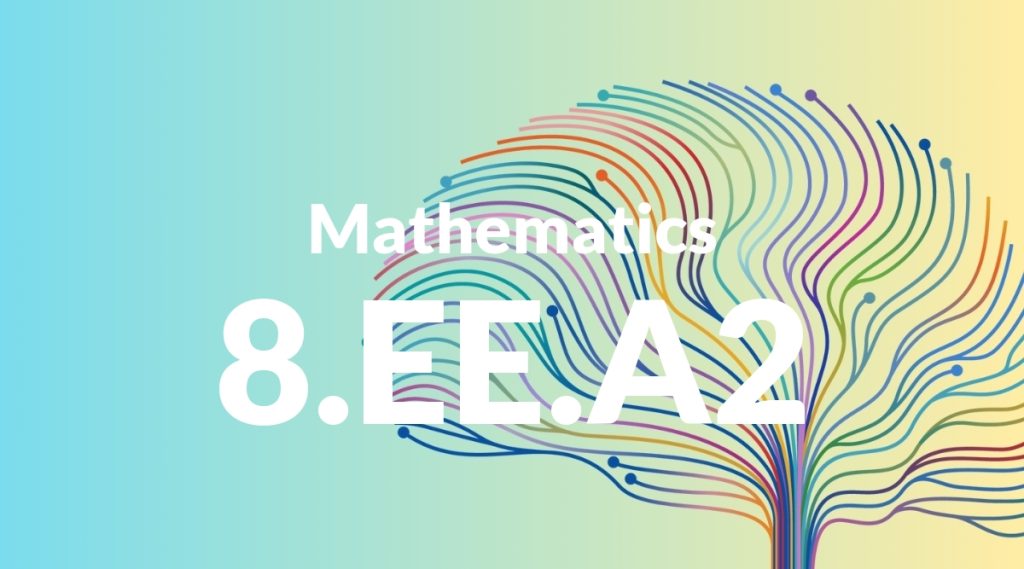Standard: 8.EE.A2 – Use square root and cube root symbols to represent solutions to equations of the form x² = p and x³ = p, where p is a positive rational number. Evaluate square roots of small perfect squares and cube roots of small perfect cubes. Know that √2 is irrational.
Grade level: Grade 8
Subject: Mathematics
Domain: Expressions & Equations
Teacher Overview
This standard focuses on using square root and cube root symbols to solve equations and understand the nature of rational and irrational numbers. It is crucial because it builds on students’ algebraic knowledge and prepares them for more advanced mathematical concepts. Students should be comfortable with exponents, basic algebraic manipulations, and the distinction between rational and irrational numbers.
Students will be prepared to tackle more complex algebraic equations and have a deeper understanding of the properties of numbers, including irrational numbers.
Common Misconception 1
Some students may think that all roots are rational because they are used to dealing with perfect squares and cubes. This is incorrect because many roots, such as √2, are irrational.
Intervention 1
Introduce students to a variety of roots, including both rational and irrational examples. Use visual aids like number lines to show their placement and difference.
Common Misconception 2
Another common misconception is that the square root of a number is always positive. This is incorrect as every positive number has both a positive and a negative square root.
Intervention 2
Clarify the concept of principal square roots and demonstrate that both positive and negative roots exist through examples and number lines.
Prerequisite Knowledge
Students should have a basic understanding of exponents and basic algebraic equations. They should also be familiar with the concept of rational and irrational numbers.
Subsequent Knowledge
After mastering this standard, students will be able to solve more complex algebraic equations involving exponents and roots, and they will have a deeper understanding of irrational numbers.
Instructional Activities
- Solve equations involving square and cube roots in pairs.
- Create visual aids to differentiate between rational and irrational numbers.
- Use real-life examples to find square and cube roots.
- Conduct a number line activity to visualize roots.
- Group discussions on the properties of square and cube roots.




